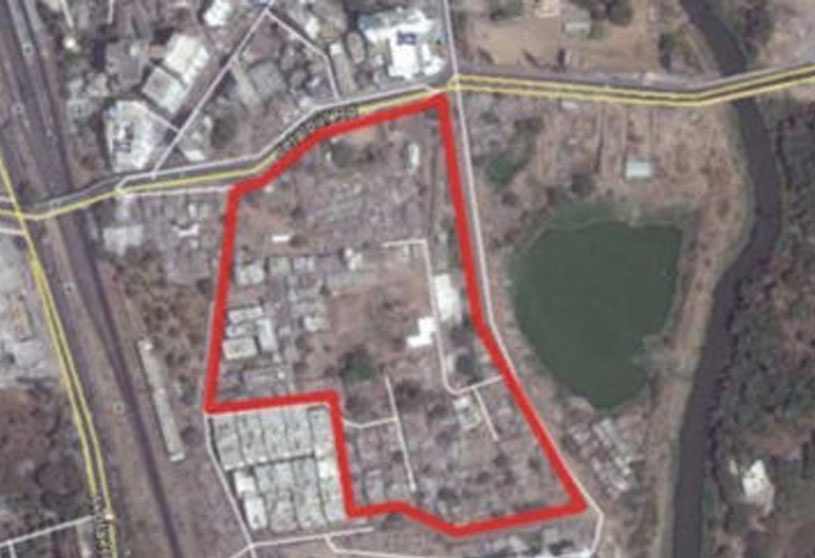FREE STUDIO (SEM-IX)
Academic Year 2016-17
Project Title: Archeological Complex and Interpretation Center, Dholavira, Kutch
The Indus Valley or Harappan civilization has been one of the most prominent in history. Dholavira, situated in ‘Khadir bet’, Kutch, is a prime site holding many clues to Harappan life. Dholavira, the fifth largest Harappan site in the world, is a journey back in time. In Kutch, through the vast saline desert plains of the Great Rann, one can feel the modern age vanishing briskly to slowly reveal the ambience of a bygone time.
The first settlements of the Harappan civilization dates back 4500 years. Seeing the amazingly systematic town plan and other fascinating glimpses of architecture at Dholavira makes one wonder at the sophistication of Harappan thinking. Dholavira has the world’s earliest and best planned water conservation systems and what might be the world’s first signboards, written in ancient Indus script. Excavations in the site have revealed seven significant cultural stages documenting the rise and fall of the Indus civilization. Besides, they have brought to light a major model city, which is remarkable for its exquisite planning, monumental structures, evolved house-types, amazing water harvesting system and a variety of funerary architecture.
The island of Khadir bet is dotted with many small villages where the traditional Kutchi crafts are still practiced by artisans. Dholavira is alive with an abundance of sophisticated Kutchi cultural symbols that survive and even thrive in the modern times. Kutchi embroidery is legendary for its exquisite nature and variety. Hand printing on textiles is another regional specialty. Fine wood carvings as décor and as utensils form one of the best handicrafts of the region. Sophisticated silver work, engraved jewellery, pen knives and nut crackers are also proud souvenirs for tourists when they leave Dholavira.
The archeological site of Dholavira, Kutchi handicrafts, and white rann are some of the features that attract many tourists, as well as archaeologists. The proposed ‘Archeological Complex and Interpretation center’ intends to cater the needs of both. Thus, the project has two broad components which are highlighted below.
The tourist’s component: To enhance the understanding of such a vast culture and heritage into the contemporary world is essential. Interpretation centre can be a viable solution for effective communication of heritage and culture, and also can be an important factor for tourism development. Here to aid and stimulate the discovery process and visitor’s intellectual and emotional connection to heritage, the main presentation strategy tends to be user friendly, interactive and often use scenographic exhibitions and multimedia programs.
The archeologists component: Archaeology is the study of the past through its material remains that survive into the present. Archaeology bridges past and present societies through the study of the human heritage and its role in contemporary societies. A research institution can function with interdisciplinary approach to the material remains of past societies, drawing in equal parts on the humanities, social sciences, and natural sciences. Here the archaeologist can work to the greater understanding of archaeology, to the protection and preservation of the Dholavira’s archaeological resources and the information they contain, and to encourage and support archaeological research and publication.
The site for the proposed project is at the entrance of the archeological complex, on the eastern side of the Manhar river, with an area of 38685 sq. m. Existing check-dam, also used as bridge to access the excavated site, is in a dilapidated condition and can be relocated by the students. Following are some of the key issues that the project is trying to deal with.
- Even though the project is divided in two major areas – Interpretation centre and research centre, design and layout should be interactive. The design should engage the tourists in a more participative manner rather than a mere spectator.
- The site is situated in a very strong context, which can serve as reference in the design process. The very architecture of the interpretation centre has a possibility of evoking the experience of history to the visitors.
- The archeological site of Dholavira has a very strong presence in the landscape; The absence of buildings and trees further enhances its importance. It will be interesting to see what is the position the students take in their design with respect to the landscape.
- The island of Khadir bet is surrounded by the great rann (desert) of Kutch, popularly known as white rann. The project should give response to the harsh desert climate of the Kutch region.
- The Manhar River, which separates the archeological site from the proposed project, and the check dam provide a unique opportunity to work with water management systems. The meagre rainfall of the region also demands self-sufficiency in terms of water.
- A major chunk of the site falls under the prohibited area where no permanent construction can be allowed. These areas have a potential to be developed as plazas and park, which can serve as a public realm.
The detailed program of the project is given below with the area (in sq. m.) and requirements, site plan and site photos.
